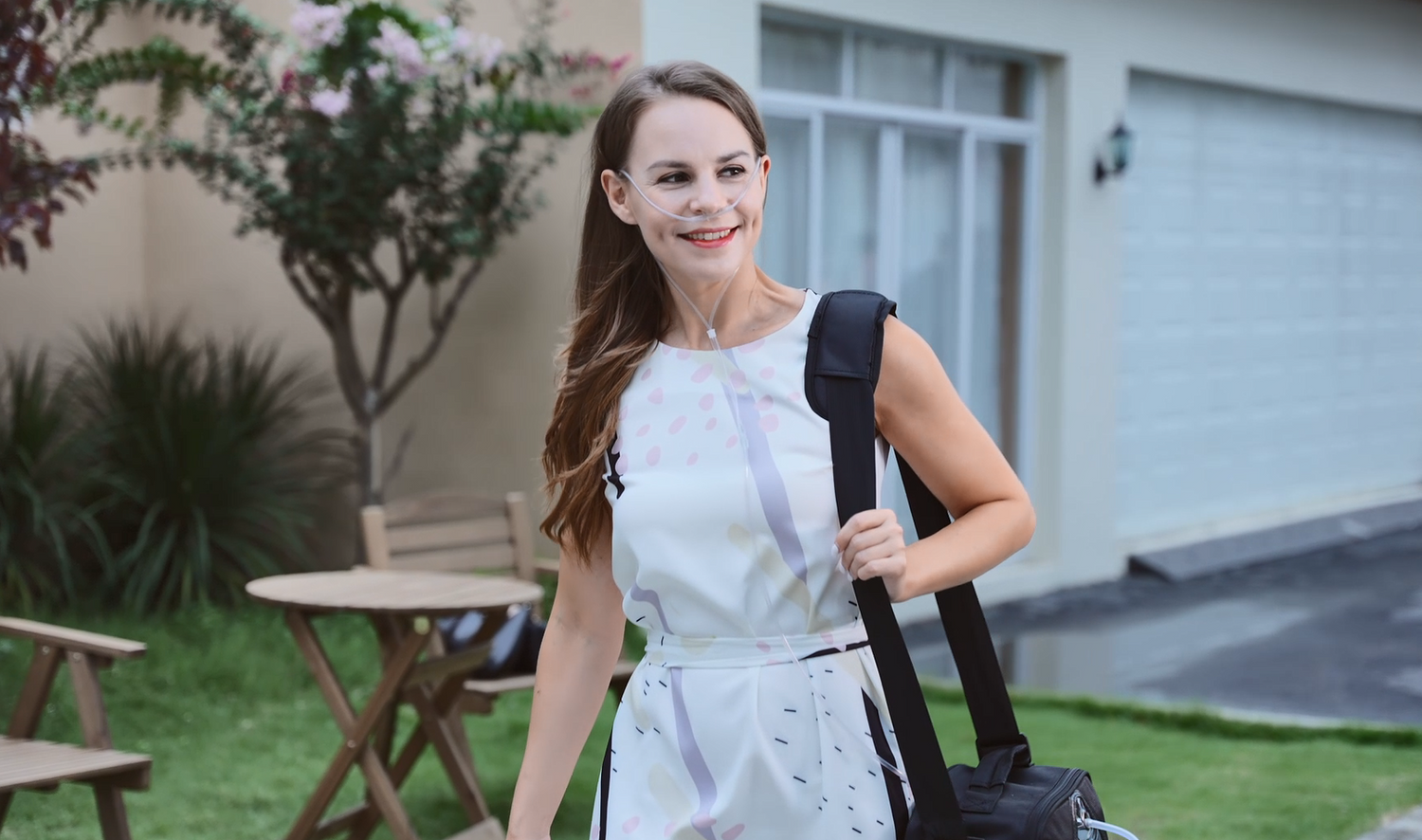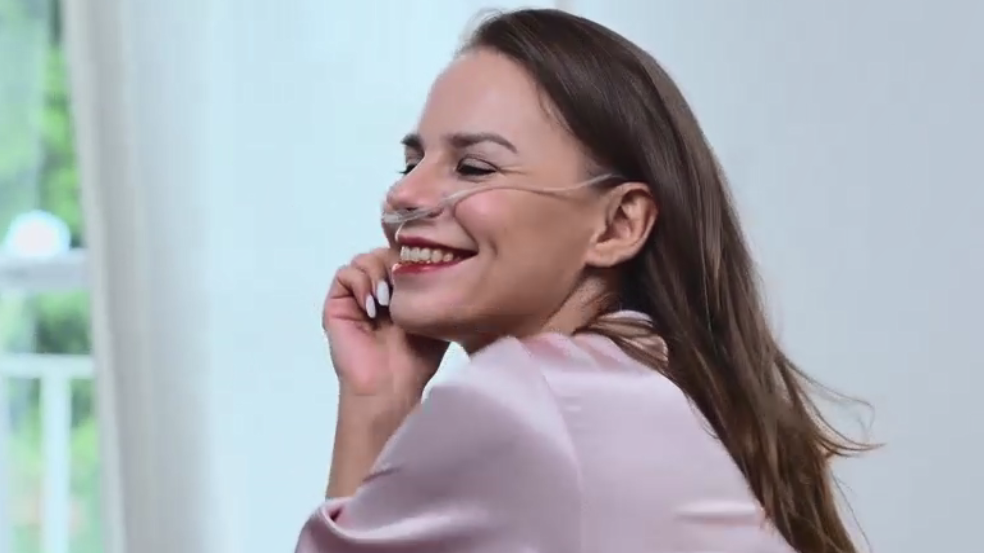Introduction
Chronic obstructive pulmonary disease (COPD) is a progressive lung disease characterized by persistent respiratory symptoms and airflow limitation. COPD patients often worry about "the harm of oxygen deprivation to the body". So does chronic hypoxemia really cause irreversible damage to body organs? This article will elaborate on this issue from multiple perspectives.
I. The Dangers of Hypoxemia in COPD Patients
Hypoxemia refers to an abnormally low level of oxygen in the arteries. It can have serious health consequences. For COPD patients who already have compromised lung function, hypoxemia can exacerbate respiratory symptoms and accelerate disease progression.
1. Influencing Factors of Oxygen Deprivation Damages
The damage hypoxemia does to the body depends not only on the degree of oxygen deprivation but also on the duration of hypoxemia.
- Degree of hypoxemia: The lower the blood oxygen saturation level, the more severe the hypoxemia. When blood oxygen levels fall below 90%, there is a significant hypoxemic state. Below 80%, it is considered severe hypoxemia.
- Duration of hypoxemia: The longer the hypoxemic state persists, the more damage it will cause. Both occasional sharp drops in blood oxygen level and chronic mild hypoxemia over months or years will accumulate damage.
In general, the lower the oxygen level and the longer the duration, the more severe damage hypoxemia does to the body.

2. Damages Caused by Hypoxemia
- Short-term damages: In the short term, hypoxemia can cause COPD patients to experience acute symptoms such as breathing difficulties, dizziness, chest tightness, pounding heartbeats, confusion, sleep, increased blood pressure, and shortness of breath. In severe cases, loss of consciousness may occur.
-
Long-term damages: If the state of hypoxemia persists for months or years due to severe COPD progression, it will eventually cause irreversible damage to multiple organs such as:
- Brain: cognitive impairment, memory loss
- Heart: pulmonary hypertension, heart failure
- Liver: hepatic fibrosis
- Kidneys: renal insufficiency
- Muscles: muscle wasting
- Bone marrow: polycythemia (excess red blood cell production)
Therefore, it is critical for COPD patients to monitor their blood oxygen levels and correct hypoxemia in a timely manner before damages become irreversible.
II. The Difference Between Acute and Chronic Hypoxemia
1. Acute Hypoxemia
Acute hypoxemia refers to a sudden drop in blood oxygen that occurs in an extremely short period of time from seconds to minutes. This kind of acute desaturation is most commonly seen in COPD patients during exercise or acute exacerbations. Acute severe hypoxemia for even a few minutes can be fatal.
2. Chronic Hypoxemia
In contrast, chronic hypoxemia refers to a long-term state of insufficient blood oxygen supply lasting for months or years. This slowly develops in COPD patients as their underlying lung function deteriorates over time. The persistent chronic hypoxemia eventually leads to cumulative damage of body tissues and organs.
III. Why Hypoxemia Occurs in COPD Patients
There are several reasons why COPD patients often suffer from chronic hypoxemia:
1. Airflow Obstruction and Emphysema
The key characteristic of COPD is chronic airflow obstruction and emphysematous damage to the lungs. This causes oxygen exchange problems between the lungs and the bloodstream. Air cannot move smoothly in and out of the damaged lungs, resulting in poor oxygenation of the blood.
2. Ventilation-Perfusion Mismatch
In addition to airflow limitation, COPD lungs also exhibit reduced pulmonary capillary blood flow relative to alveolar ventilation. This mismatch between ventilation and perfusion directly impairs oxygen absorption into the bloodstream.
3. Low Diffusing Capacity
The extensive emphysematous destruction of gas exchange units in COPD patients' lungs lowers the diffusing capacity of the lungs. This restricts how efficiently oxygen can transfer from the air in the lungs to the pulmonary capillary blood surrounding the alveoli.
4. Decreased Oxygen Supply Capacity of the Lungs
Due to the cumulative impact of the above reasons, the oxygen supply capacity of COPD patients' lungs keeps declining as the disease worsens over time. When the oxygen partial pressure in the arterial blood drops below 55-60 mmHg, external supplementary oxygen is required to correct hypoxemia.

IV. Minimum Requirements for Home Oxygen Therapy in COPD
When COPD patients develop severe chronic hypoxemia (commonly PaO2 ≤ 55mmHg or SpO2 ≤ 88%) that persists despite optimal therapy, long-term home oxygen therapy is required.
1. At Least 15 Hours Per Day
Clinical studies have shown that in order to consistently improve survival in COPD patients, home oxygen therapy needs to be used for at least 15 hours per day. Oxygen therapy duration below 12 hours per day does not lower mortality risk. 18 hours per day provides slightly more benefits.
2. Continuous Oxygen Therapy Is Necessary
In addition to sufficient duration, oxygen therapy needs to be continuous without significant prolonged interruptions. Intermittent oxygen use or oxygen therapy with frequent short breaks has poor efficacy in COPD patients. Continuous oxygen exposure helps avoid repetitive sequences of oxygen desaturations and reoxygenation injury.
3. Both At Rest and During Exercise
Home oxygen therapy is clinically titrated to correct hypoxemia both at rest and during exertion. COPD Patients should use oxygen continuously even when resting. And during any physical activity, they need to adjust oxygen flow rates even higher to prevent desaturation. Mobile oxygen devices help ensure uninterrupted oxygen delivery.
4. Monitoring Usage and Effects
After initiating home oxygen therapy, patients should monitor usage hours closely using the timer in their oxygen equipment. Healthcare providers need to recheck blood oxygen levels after some time to ensure hypoxemia is properly corrected by the oxygen regimen.
V. Exercise-Induced Hypoxemia Also Needs Correction
In addition to chronic resting hypoxemia, many COPD patients also periodically suffer from intermittent oxygen desaturation triggered by exercise and exertion. Such oxygen drops during physical activity, known clinically as exercise-induced hypoxemia, need to be promptly treated as well.
When COPD patients experience decreased blood oxygen saturation during exercise, timely correction is necessary. They should lower activity levels and use portable oxygen systems to prevent exacerbation of hypoxemia. Ambulatory oxygen before, during, and after exercise is crucial.
VI. Can One Get Addicted to Oxygen Therapy
Some patients worry if long-term oxygen therapy leads to addiction or dependence. Unlike addictive drugs, oxygen is an essential element required for human survival and normal physiological functioning.
Oxygen Therapy Is No Different From Medication
Supplemental oxygen for hypoxemic patients is a medical treatment akin to people with high blood pressure using anti-hypertensive drugs long-term or diabetics taking insulin injections.
Rather than patients developing a "craving" for oxygen, oxygen therapy alleviates vital organ hypoxia that COPD patients suffer from due to their diseased lungs. As long as hypoxemic symptoms exist, these patients need additional oxygen supplementation to sustain life and health.

VII. Proper Use of Oxygen Concentrators at Home
Having discussed the necessity and clinical requirements of home oxygen therapy, the appropriate choice of oxygen equipment and proper use technique also impact treatment effectiveness.
1. Choosing Suitable Oxygen Concentrators
COPD patients need to select oxygen concentrators or portable systems suitable for their condition, mobility, and treatment goals. Key aspects include:
- Oxygen concentration range
- Flow rate settings and capacity
- Pulse vs continuous flow
- Sound level
- Weight and portability features
- Additional humidification accessories
A respiratory therapist can guide patients in finding the right model. Patients should avoid buying devices that do not meet doctors' prescribed oxygen requirements.
2. Standardized Device Use
When using home oxygen concentrators, patients must follow instructions for use time per day, flow rate, or SpO2 target settings by their oxygen prescription. Proper device maintenance like replacing filters is also necessary.
3. Carry Portable Oxygen When Exercising Outdoors
COPD patients who wish to have an active lifestyle should consider portable oxygen concentrators or compressed gas systems. These allow patients to move freely while receiving continuous oxygen both indoors and outdoors. Having backup oxygen avoids a sudden lack of oxygen in any situation.
Conclusion
The chronic hypoxemia often faced by COPD patients due to their progressive lung dysfunction can be alleviated through patient-customized and physician-monitored long-term oxygen therapy. Such treatment when meeting specific clinical criteria has conclusively demonstrated improved survival and reduced hospitalizations. At the same time, selecting the right oxygen equipment and using it properly also impacts overall therapy benefits. Consistent, uninterrupted oxygen use both at rest and during activity is key.
Read More
- Working Principle of Portable Oxygen Concentrator - Lovego Medical
- How To Solve Beeping Alarms on Your Oxygen Concentrator - Lovego Medical
- Select the Right Portable Oxygen Concentrator for Active Lifestyles - Lovego Medical
- Choosing Your idea POC: Pulse vs. Continuous Flow - Lovego Medical
- How to Choose a Right Device - Lovego Medical





اترك تعليقًا
This site is protected by hCaptcha and the hCaptcha Privacy Policy and Terms of Service apply.